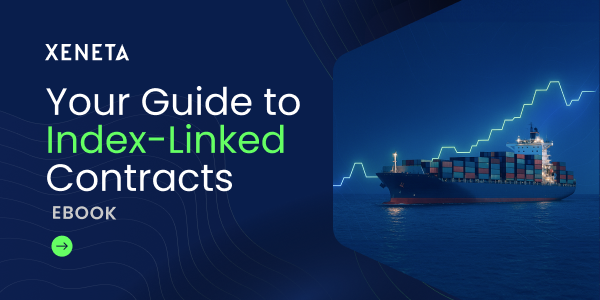|
Data highlights
- Market average spot rates – 8 July 2025:
- Far East to US West Coast: USD 2673 per FEU (40ft container)
- Far East to US East Coast: USD 5151 per FEU
- Far East to North Europe: USD 3393 per FEU
- Far East to Mediterranean: USD 4197 per FEU
- North Europe to US East Coast: USD 1992 per FEU
- Market average on the Transpacific trade from Far East to US West Coast accelerated its decline in the early days of July, down 18% from end-June and falling below the level seen in second half of May. With carriers now deploying more capacity above the level required to meet shippers’ demand, spot freight rates are likely to soon be at the lowest level since end-2023.
- Market average spot rate for Far East to US East Coast rose in the first half of June, but has since has fallen 27% to USD 5151 per FEU on 8 July. This trade has seen a ‘delayed’ capacity response from carriers following temporary lowering of US tariffs, causing rates to hold up in June.
- More ‘severe’ overcapacity was seen into US East Coast in the early days of July. The average spot rate from Far East into the US East Coast is down 5% in early July from end-June.
- The average spot rates from Far East into the Mediterranean and North Europe have seen diverging trends since start of July. The higher-flying freight rate in the Mediterranean declined 5% from end-June to 8 July, whereas North European bound cargos had to pay 18% more on 4 July compared to end-June.
- The spread between average spot freight rates into the Mediterranean and North Europe has fallen to the lowest level since mid-April, down to USD 804 from an average of USD 1 664 per FEU in June.
- As we await news on a trade agreement between EU and the US, market average on the trade from North Europe to US East Coast dropped to a 10-month low at USD 1 992 per FEU. Down 5% in July.
The latest average spot rate data is provided in the attached documents ‘Xeneta - weekly market update 08.07.25’ and ‘Xeneta - weekly market update chart 08.07.25’.
.png?width=2711&height=1716&name=Picture7-min%20(1).png)
Xeneta analyst insight - Transpacific
Peter Sand, Xeneta Chief Analyst:
"Geo-politics has upset the natural order of ocean container shipping on Transpacific trades in Q2 and shippers are still struggling to make sense of the situation. Shippers need to act decisively to protect supply chains, but this becomes more difficult when they see abnormal trends such as Far East fronthaul freight rates collapsing into the US West Coast while holding stronger into the US East Coast.
"Average spot rates into the US West Coast have fallen 51% in just over a month. Carriers will be desperate to arrest this decline so the flooding of capacity we have seen on this trade since the temporary lowering of tariffs will stop. That means average spot rates into the US East Coast will decline at a faster rate and likely fall to within USD 1000 of rates into the US West Coast by the end of July – a much more familiar scenario for shippers."
Xeneta analyst insight – North Europe
Peter Sand, Xeneta Chief Analyst:
“Severe congestion is spreading across North Europe ports – and the bad news is it's here to stay for the remainder of 2025, causing operational disruption and pushing freight rates up.
“Average spot rates from Far East to North Europe were up 18% on 4 July compared to end-June, while carriers have been forced to revise service schedules, whether that is avoiding port calls in congestion hot spots or calling at ports they would not ordinarily do so. This causes disruption that becomes exponentially difficult to unwind and another painful headache for shippers.”
Ends
Xeneta’s Media Contacts:
Philip Hennessey
Director of External Communications
Xeneta
+44 7830 021808
press@xeneta.com
|



.png?width=2711&height=1716&name=Picture7-min%20(1).png)


